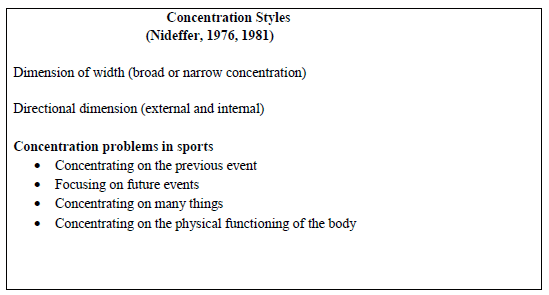Why should we observe and listen? Concentration of attention
Winning or losing a mach or a race often happens within a moment. The athlete who is capable of mastery concentration (1.) and can maintain it for some time (2.) he/she will have the chance to win.
Many athletes equipped with excellent skills and abilities will perform bellow maximum because they cannot concentrate at the most important moments. Unfortunately there are Hungarian teams who lost matches in the last moments and these failures are attributed to some Hungarian ‘curse’.
It is also well-known that in PE classes no engraved motions and actions exist without concentration. Practitioners should not forget about the fact that children are not able to concentrate more than 15-20 minutes. This period of time can be planned to make children work effectively. If their concentration decreases it cannot be attributed to their lack of interest and it is not done “on purpose’. This should be known by every coach and PE teacher.
It is also a problem in sports that athletes must select among a great number of stimuli, for example, whistles, fans, rules, ball, defensive and offensive players’ motions, parents, and coach. As soon as they have opted for the relevant stimulus they should be focusing on the relevant stimuli.
Nideffer thinks that (see in Nagykáldi, 1998) the focus of attention or concentration shifts along two dimensions, the broad and narrow as well as the external and internal concentrations (see Figure 7.).

Figure 7. Concentration Styles on the basis of Nideffer’s theory